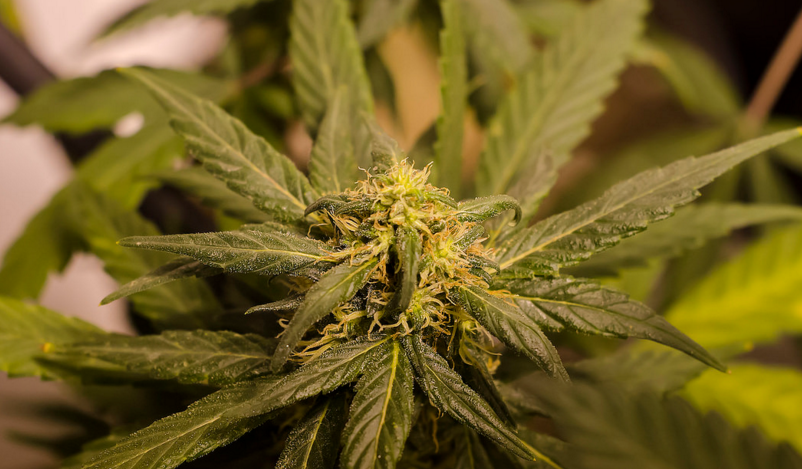The ‘cognitive impairment theory’ proposes that cannabis causes cognitive decline. The hypothesis has gained some support from a 2012 study, but a recent paper with twin participants strongly argued against the theory. Both studies agree on the association between smoking and cognitive decline. Where they disagree is whether the relationship is causal or merely correlation. In this Dose of Science we take a close look at the question.
The 2012 Dunedin cohort study by Meier and colleagues suggested that adolescent marijuana use causes cognitive decline into adulthood [1]. It is a longitudinal study, meaning that IQ was first measured during childhood and then later at adulthood. The study observed a correlation between cannabis smoking and cognitive decline. Given the correlation, the fact that marijuana smoking preceded cognitive decline and that no other factors could account for the results, the authors have concluded the pot smoking causes cognitive decline. Specifically, the authors ruled out past 24 hour cannabis use, past week cannabis use, tobacco dependence, hard drug dependence, alcohol dependence, years spent in education, and schizophrenia, as alternative explanations for the observed correlation. Despite these controls, some researchers still argued that confounding variables could be driving the relationship.
Daly proposed that personality traits could be a confounding factor [2], while Rogeberg used computer simulations to demonstrate that socioeconomic status (SES) could plausibly explain the correlation [3]. SES confounding would mean that children from poorer neighbourhoods tend to both smoke more marijuana and experience cognitive decline into adulthood (without marijuana actually causing the cognitive decline). A possible explanation is that children from deprived backgrounds attend college at lower rates, and hence, due to the intellectually less challenging environment, develop cognitive deficits, as compared to their peers from wealthier families.
The authors of the Dunedin cohort study have issued a response, in which they claim that none of these variables could explain their data [4]. Their reasoning was twofold: adolescent marijuana smokers are not concentrated to low SES families (1); and if the analysis is restricted to only middle class families, the correlation still stands (2). Rogeberg still rejected their conclusions on some technical grounds [5], and due to the lack of further evidence, the two sides agreed to disagree.
This was the situation until Jackson et al.’s study of twins was published earlier this year [6]. This study is also a longitudinal design, and just like Meier, Jackson has also observed a correlation between cannabis smoking and cognitive decline. There are differences between the two studies, but in this article we focus on the question of whether a confounding factor can explain the correlation. Jackson and colleagues have argued this is the case, citing three reasons: pre-existing differences, lack of dose-response relationship, and the lack of clear association for discordant twins.
The study found some baseline differences in cognitive abilities, i.e. even at age 9 the future marijuana smokers were already cognitively deficient, as compared with future non-smokers. This is an indication of an environmental and social confounding factor or factors. The baseline difference, however, was not consistent across the samples analysed by Jackson, and also lacks support from the Meier study, hence this evidence is not very convincing.
If marijuana is neurotoxic, a dose-response relationship would be expected, with heavier smokers suffering a greater degree of cognitive decline. In contrast with Meier’s study, such a relationship was not observed by Jackson. This discrepancy could be explained, however, by the method Jackson used to categorise marijuana exposure. Participants were assigned to one of four categories: never tried marijuana, used marijuana < 30 times, used marijuana > 30 times, and used marijuana daily over a period of 6-12 months. This is not a finely-calibrated scale – 'having smoked > 30 times' and 'used marijuana daily over a period of 6-12 months' is potentially a very large gap in exposure. For example, the difference between having smoked 50 times during the study period, and daily marijuana smoking for 12 months represents a seven-fold increase in exposure! Indeed, the study has been criticised by some experts, on the grounds that with such a coarse-grained measure of marijuana exposure, it is no surprise that no dose-response relationship has emerged [7].
The most informative part of Jackson’s study is when they analyse twins who are discordant for marijuana smoking, meaning that one sibling smoked, while the other did not. These children share the same socio-cultural background, hence discordant twins provide a very strong control to isolate the effect of marijuana from possible confounders. The control is even stronger for monozygous twins where even the genetic makeup is identical. Note that the discordant twin analysis is a stronger test for confounding than the traditional statistical control for SES. “Controlling for” is a set of statistical techniques that work best for linear relationships where the variables can be well quantified. It is not difficult to argue that a single SES variable is not going to capture all the different life experiences that children from different cultural backgrounds encounter.
The study did not observe any differences in cognitive decline for discordant twins. This means that the marijuana-using and the abstinent sibling experienced a similar pattern of cognitive decline, suggesting that the loss of mental abilities was not due to marijuana. The authors examined those cases where one sibling never tried marijuana and the other was a heavy smoker (heavy smoker was defined as smoked > 30 times, which we feel is an underestimate of who should be considered a heavy smoker). This is a strong test for the cognitive impairment theory, but again the authors did not find any significant differences (although in this case there were only a few eligible twin pairs, n=47). These results are true, irrespective of whether the analysis was restricted to only monozygous twins.
It should be noted that when Jackson and colleagues controlled for SES with the traditional statistical techniques, they found significant association with smoking and cognitive decline. This finding, combined with the discordant twin analysis, strongly argues that statistical control for SES is not in itself sufficient to investigate the effects of marijuana during adolescence.
So what was learned from the paper and what further research does it suggest? The study has concluded that “the deficits observed in marijuana users are attributable to confounding factors which influence both substance initiation and IQ, rather than a neurotoxic effect of marijuana”. This conclusion is well supported by the discordant twin analysis; a few caveats are in order, however.
Notably, the researchers tracked the performance of the participants in only a few cognitive domains. For example, executive function or working memory were not examined. It is feasible that pot is not damaging in the domains that the researcher have studied, but has negative consequences in other domains. Furthermore the lack of a finely-calibrated measure of marijuana exposure limits how much the study can reveal about a possible dose-response relationship.
Despite these points of criticism the study significantly improves our understanding of the relationship between cognitive decline and adolescent marijuana smoking. The discordant twin analysis strongly argues that the relationship is not causal, but rather confounded by social and environmental factors.
References:
[1]: Meier, Madeline H., et al. "Persistent cannabis users show neuropsychological decline from childhood to midlife." Proceedings of the National Academy of Sciences 109.40 (2012): E2657-E2664.
[2]: Daly, Michael. "Personality may explain the association between cannabis use and neuropsychological impairment." Proceedings of the National Academy of Sciences 110.11 (2013): E979-E979.
[3]: Rogeberg, Ole. "Correlations between cannabis use and IQ change in the Dunedin cohort are consistent with confounding from socioeconomic status."Proceedings of the National Academy of Sciences 110.11 (2013): 4251-4254.
[4]: Moffitt, Terrie E., et al. "Reply to Rogeberg and Daly: No evidence that socioeconomic status or personality differences confound the association between cannabis use and IQ decline." Proceedings of the National Academy of Sciences 110.11 (2013): E980-E982.
[5]: Rogeberg, Ole. "Reply to Moffitt et al.: Causal inference from observational data remains difficult." Proceedings of the National Academy of Sciences 110.11 (2013): E983-E983.
[6]: Jackson, Nicholas J., et al. "Impact of adolescent marijuana use on intelligence: Results from two longitudinal twin studies." Proceedings of the National Academy of Sciences (2016): 201516648.
[7]:http://www.sciencemag.org/news/2016/01/twins-study-finds-no-evidence-marijuana-lowers-iq-teens (Accessed on 12th February 2016)
(Cover image was obtained from https://www.flickr.com/photos/121483302@N02/14875946061/ under the Creative Commons license)





